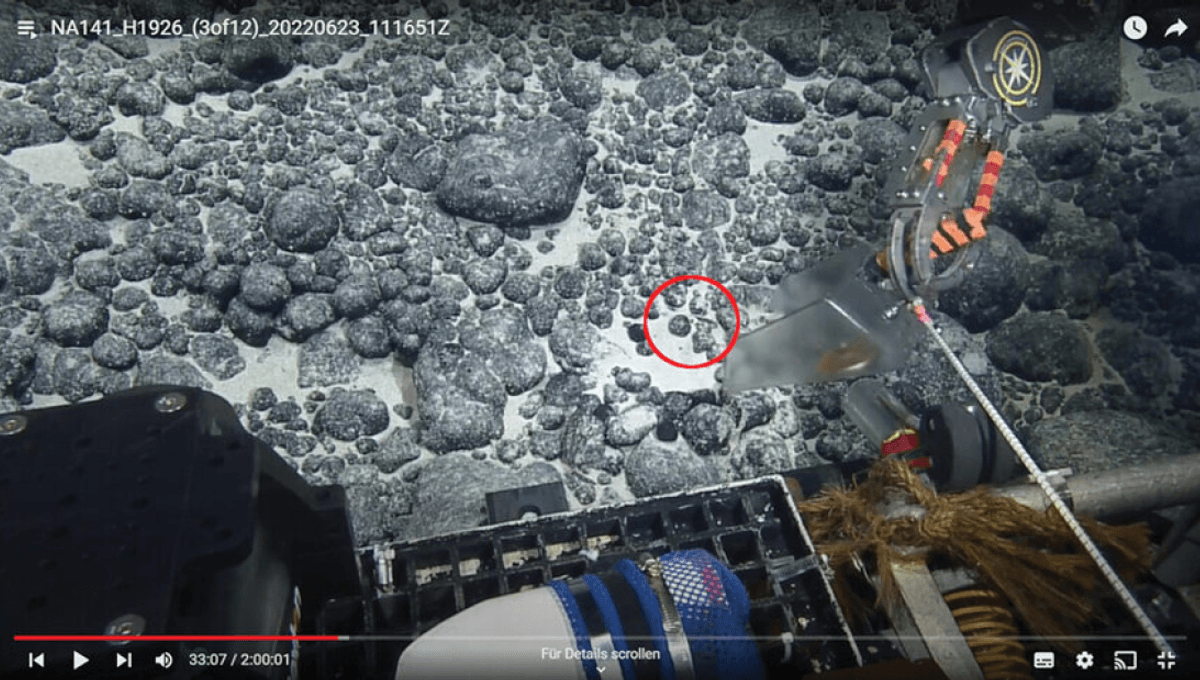
Fossil hunters in search of the teeth of ancient marine predators will tell you that one of the best places to head is the beach. Combing along the shoreline in places like the UK’s Jurassic Coast can turn up teeth dating back millions of years (including the snout of a 150-million-year-old “giant sea monster”) – but as a remote-operated vehicle (ROV) recently revealed, there are treasures to be found in the deep sea, too.
During an expedition aboard Exploration Vessel (E/V) Nautilus, a team of researchers operating the ROV Hercules stumbled across a megalodon (Otodus megalodon) tooth at a depth of around 3,090 meters (9,842 feet) within the Pacific Remote Islands Marine National Monument. It was filmed in situ before being scooped up among some nodules resting on the sea bed.
The megalodon tooth is preserved only as the triangular crown, but it’s remarkably well preserved as the fine details of its serrated edge are still visible. A jagged-edged tooth comes in handy when hunting for fleshy marine mammals like whales and dolphins, as a serrated edge makes for the ultimate cutting tool.
The tooth is coated in parts with a crust of manganese, a chemical element that’s known to develop around fossil nuclei. Manganese nodules are objects of significant interest in the green battery revolution, as some companies believe harvesting abyssal plains for these lumps that are rich in rare metals could be a less damaging way to source the raw materials needed.
“90 percent of the world’s exploration contracts for nodules are in the Clarion-Clipperton Zone, which represent less than half of 1 percent of the global seafloor,” TMC PR and Media Manager Rory Usher told IFLScience. “But this represents the largest source of manganese, nickel, and cobalt, anywhere on the planet and that dwarfs everything on land by many orders of magnitude. There are enough metals in situ at two of the sites that would satisfy the needs of 280 million cars, which represents every car in America, or a quarter of the world’s vehicle fleet.”
However, like all explorative ideas, it’s not without its downsides.
The fierce tooth has sat on the seabed for at least 3.5 million years, write the researchers, and in that time may have served as food for a peculiar group of worms. The annelid (segmented worm) Osedax packardorum is known to bore into teeth to feed on dentin pulp, and it’s possible the giant teeth of megalodon could’ve served as a hearty meal.
From one marine predator’s mouth to the seabed and a 3.5-million-year wait to be scooped up by a robot, this tooth sure has some stories to tell. Finding fossils in the deep sea might not be easy, but the researchers say it shows that it’s worth looking if we’re going to fill in the gaps in our knowledge of these poorly preserved animals.
“The first in situ documentation of a megatooth shark fossil from the deep sea highlights the importance of using advanced deep-diving technologies to survey the largest and least explored parts of our ocean,” they conclude.
The study is published in the journal Historical Biology.
[H/T: Science Alert]
Source Link: Giant Megalodon's Serrated Tooth Found In The Deep Sea By An ROV